


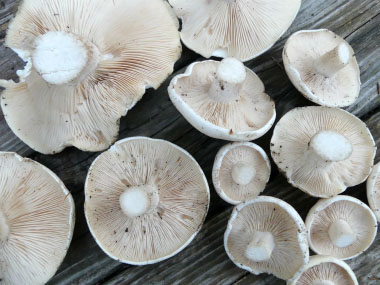
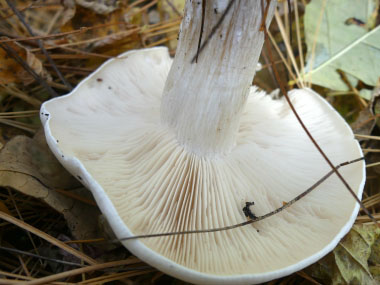
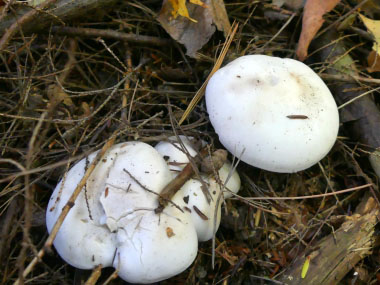
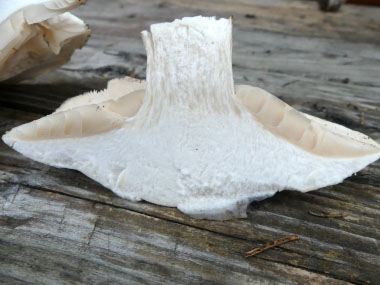

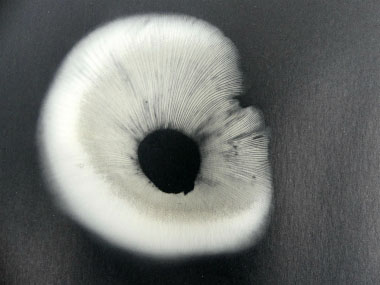
Do not eat any fungi that has not been properly identified by a qualified professional, some are DEADLY when ingested. All edible wild fungi MUST be cooked.
Flowery Blewit is a common and widespread, medium-to-large-sized mushroom. It typically grows in late summer well into the autumn either in small groups, clusters or fairy rings. It grows on the ground in soil or on woody debris. It is saprobic, obtaining its nutrients from decaying organic matter. It has a “flowery” odour that is somewhat faint, yet sometimes strong and sharp.
Type
Distinguishing Features
The cap measures 5 to 10 cm across; growing hemispherical then broadly convex with an undulating margin. The cap is smooth, white becoming pale beige. When moist, it is pinkish brown towards the centre. When the mushroom first appears, the cap can be sticky. The flesh is thick, white to pinkish, and soft.
Height
The flowery blewit does not grow tall, it is low to the ground. Typically they are 5 to 8 cm tall. Once the leaves start falling they can be hard to spot.
Habitat
Deciduous and sometimes conifer forests. Most common in deciduous forests.
Spore Print
Creamy white.
Season
Late summer well into autumn.
Gills
The gills are adnate or sinuate; narrow; crowded; cream, turning buff-pink when mature.
Edibility
It is edible when fully cooked; however, it has been known to cause upset stomach in some individuals.
Other Name
Clitocybe irina.
Recipes
To support our efforts please browse our store (books with medicinal info, etc.).
Winter Survival Food Handbook

PDF Plant Magazines
Types of Wild Food
Geographic Zones Seasons
Disclaimer
EdibleWildFood.com is informational in nature. While we strive to be 100% accurate, it is solely up to the reader to ensure proper plant identification. Some wild plants are poisonous or can have serious adverse health effects.
We are not health professionals, medical doctors, nor are we nutritionists. It is up to the reader to verify nutritional information and health benefits with qualified professionals for all edible plants listed in this web site. Please click here for more information.
Why Edible Wild Food?
- Food costs are rising
- Free, wild food is readily abundant
- Wild food adds nutrition to your diet
- Wild food can help treat various medical conditions





